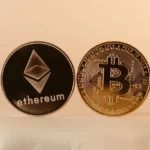Tokenomicsnis is coined with two words- token and economics. It simply means a method to find out the real value of a token by understanding its features, characteristics, opportunities, risks, strengths and overall growth potential. It covers all the elements related to creation and management of a token. Tokenomics tell how the value of a token is determined and what factors can affect its worth. Further tokenomics help the investors to tone enthusiasts to know about the demand and supply situation of a token.
Projects having well defined tokenomics are more likely to succeed as such projects explain every possible present and future aspects of a token. That incentivize to keep the token and increase hope for its inherited valuation.
Those projects which do not have tokenomics defined have more chances to fail because token holders might sell their tokens with only first sign of crisis.
So, if you are planning to buy some crypto assets, tokenomics can help you to take a more informed and wise decision.
Take a look at most important features while evaluating tokenomics of any crypto asset.
Demand and Supply of a Crypto Asset
First and the most important feature is to assess the demand and supply of a crypto asset in the market. It is very much like an analysis of demand supply of a normal asset.
Let’s first understand about the supply mechanism of any crypto asset.
Supply of any cryptocurrency can have impact of its current as well as future value. Total supply of any crypto asset will decide it’s worth. A token will increase in value if fewer coins are available. It is called deflationary effect. Likewise, if there is unlimited supply of any token then it’s value might become less as a result of inflation. As more tokens will exceed than the buyers and hence price value will decrease.
Let’s have some examples here to understand better.
Bitcoin was introduced in 2008. It announced to release a total of 21,000,000 bitcoins by next 140 years. These are released at a rate that gets halved with every four years. Already 19,000,000 bitcoins have been minted and only 2,000,000 are remaining to come in circulation by the next 120 years. These are just around 10 percent of the total bitcoins.
So, supply of bitcoins would go down and hence its value is expected to rise in future. This is the reason it is known as the gold for its future store value.
Another example is Ether. It’s different from bitcoin as there is no supply cap and any number of Ether can be minted. We don’t know exactly how many Ethers are in supply right now and how many can be minted in future. Consequently, it is also a fear that it might get devalued in future due to inflation.
Another point of concern for the investors is to understand about the investors of any token.
Who are the investors and how much they hold of the total supply of token?
How much token are given.to the community by the protocol?
Is the distribution system fair?
Does a big share of tokens hold by a specific investor or a group of investors that can unlock it soon?
Some other questions you always want to ask while choosing a token:
- If its supply is limited?
- How many tokens exist at current point?
- How many tokens will ever exist in future?
- What time it will take to release new token?
You have to consider these vital questions before deciding upon any token.
Now, let’s move to the demand side of the crypto market.
Limited supply does not guarantee the worth of any token. You need to consider many other factors as well to believe that token has value and has potential value as well.
If you want to understand the future value of any token then you have to know the return on investment (ROI) on your token, memes and game theory.
Let’s understand these three factors to know the future demand of your token.
- Return on Investment (ROI)
Rate of Return decides how much income or cashflow your token would generate if you hold it for future.
One form of ROI is when you stake your token and get paid in more token at a certain percentage rate. Example of this kind is Ether. If you keep Ether and stake it then you will get paid in more ether at the rate of about 5%.
Another variation of ROI is when you stake your token and it allow you to have a percentage gain in the protocol they represent. Like if you stake SUSHI token you can earn from SUSHI protocol revenue at a certain percentage, currently at about 10.5 APR.
Another form of ROI generates from “rebasing”, which means if you hold a token and stake it, you will get more of these tokens as the supply inflates. In this way, inflation do not cause harm as you can have the same percentage of share in the token protocol. Olympus token provides ROI in this way.
ROI decides the intrinsic value of token and justify your decision not hold it.
- Memes
Once you believe that other people also want the same taken you have, you would like to hold the token. Here you consider that people will also want the token in future and as a result demand and value will increase. You can call it belief, faith, conviction or memes. All you need is the strong trust that the growth of future value is always going to up with more demand.
Developing this conviction is not easy. It is not measurable and you need to find out about this demand flow by understanding the people psyche and behaviour towards a particular token. You can follow Twitter, discord, dedicated communities and discussion forums to know how people are reacting and sensing about the growth opportunities and future trajectories for the token.
Belief is the strongest factor that creates demand in the end. Let’s say bitcoin which has high demand and high value due to a strong conviction among the investors that it is a future gold.
So, it would be a smart decision to consider technical analytics along with assessing your memes or believe in token.
- Game Theory
Game theory derives from the combination of ROI and meme factors of demand. Game theory ask you to focus on those other elements of tokenomics design that can increase the demand of the token.
Evaluation of Crypto Whitepaper
you can confidently assess the worth of a token by reading its whitepaper or documents. You need to understand the demand and supply concepts in tokenomics. You have to make a sense about the causes that can create demand in future and how the supply of tokens would be managed. You have to see if your selected token would appreciate in value proportional to foundation coins like Bitcoin, Ether, Solana, and ADA.












